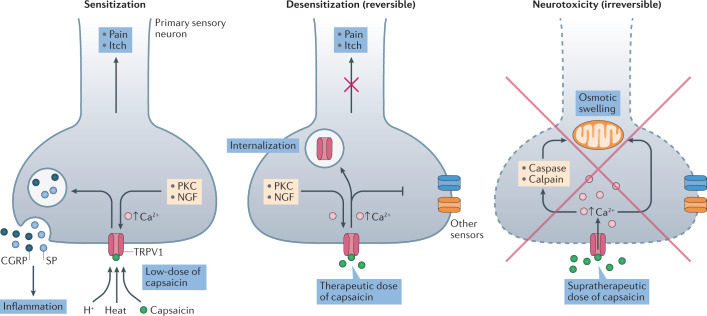Fig. 2. TRPV1 in the pain pathway: similarities and differences between desensitization by agonists and blockade by antagonists.
TRPV1 is expressed on primary sensory neurons of the unmyelinated (C fibre) type. Activation of TRPV1 by agonists like capsaicin, heat and protons (and putative ‘endovanilloids’) triggers the release of pro-inflammatory neuropeptides like substance P (SP) and calcitonin gene-related peptide (CGRP), thereby initiating the biochemical cascade known as neurogenic inflammation. At the same time, an impulse is generated that is perceived in the brain as pain or itching. Protein kinase C (PKC) and nerve growth factor (NGF) lower the activation threshold of TRPV1 (sensitization). Stimulation of TRPV1 with a therapeutic dose of capsaicin results in a lasting (up to months) but fully reversible state in which the previously excited neurons remain unresponsive (‘silent’) to further challenge; traditionally, this is called desensitization. High-dose capsaicin patches and site-specific injections relieve pain by this mechanism. There is an ill-defined line between reversible desensitization and irreversible neurotoxicity achieved by therapeutic and supratherapeutic doses of capsaicin, respectively. Although both desensitization and neurotoxicity depend on capsaicin-induced Ca2+ influx through the TRPV1 channel, the downstream molecular mechanisms are still poorly understood. Mitochondrium swelling is an early ultrastructural sign of capsaicin neurotoxicity. Ca2+ is thought to sequester in mitochondria, where it triggers apoptosis using a molecular pathway that includes caspase activation. Intrathecal resiniferatoxin is used as a ‘molecular scalpel’ to achieve permanent analgesia in cancer patients with chronic, intractable pain by ablating sensory neurons. In principle, a similar strategy can be used to kill cancer cells that overexpress TRPV1 compared with normal counterparts. We note that small molecule TRPV1 antagonists prevent only TRPV1 activation by agonists, leaving other pain sensors intact.

